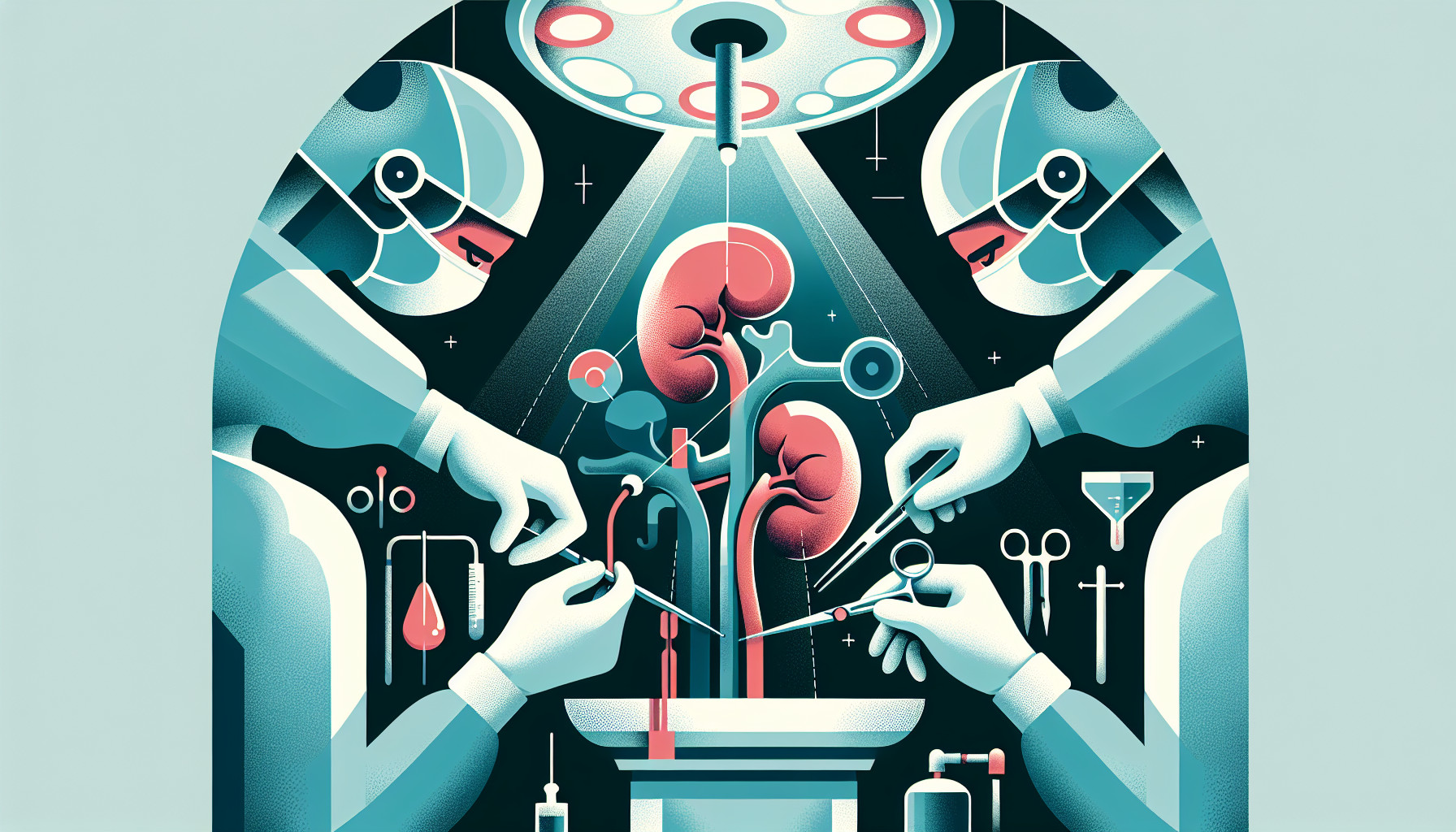Our Summary
Kidney cancer is one of the top 10 most common cancers in the Western world, with around 90% being a type called renal cell carcinomas. The way these cancers are treated has changed, with a greater emphasis now on surgeries that save as much of the healthy kidney as possible (nephron-sparing surgery). Surgeons are also more frequently using a method called laparoscopic partial nephrectomy (LPN), which involves removing a part of the kidney through a small incision.
This research paper reviews the current use of LPN. The authors looked at previous studies and clinical trials that discussed different techniques used during LPN, the outcomes for both the function of the kidney and the cancer itself, and comparisons between robot-assisted surgery and LPN.
The conclusion was that LPN reduces the amount of time the kidney is without blood supply during surgery, results in similar outcomes for kidney function and cancer control, and has a similar risk of complications compared to traditional open surgery. The authors suggest that future improvements in laparoscopic techniques and advancements in robotic technology have the potential to make these surgeries even more successful.
FAQs
- What is a laparoscopic partial nephrectomy (LPN)?
- How does LPN compare to open partial nephrectomy in terms of outcomes and complication rates?
- What potential improvements could future advancements in laparoscopic technique and robotic technology bring to surgical and patient outcomes?
Doctor’s Tip
A helpful tip a doctor might tell a patient about laparoscopic nephrectomy is to follow post-operative instructions carefully to ensure a smooth recovery. This may include avoiding heavy lifting, taking prescribed medications, staying hydrated, and attending follow-up appointments to monitor progress. It’s important to communicate any concerns or changes in symptoms to your healthcare provider.
Suitable For
Patients who are typically recommended for laparoscopic nephrectomy include those with small renal masses, early stage kidney cancer, or benign kidney tumors. Laparoscopic nephrectomy is also recommended for patients who are medically fit for surgery and who do not have extensive scarring or previous abdominal surgeries that may complicate the procedure. It is important for patients to discuss their individual case with their healthcare provider to determine if laparoscopic nephrectomy is the best treatment option for them.
Timeline
Before laparoscopic nephrectomy:
- Patient presents with symptoms such as blood in urine, back pain, weight loss, or fatigue
- Imaging studies such as ultrasound, CT scan, or MRI are performed to diagnose the kidney tumor
- Patient undergoes consultations with urologists and oncologists to discuss treatment options
- Decision is made to proceed with laparoscopic nephrectomy
After laparoscopic nephrectomy:
- Patient undergoes preoperative preparation including fasting and medication adjustments
- Laparoscopic nephrectomy is performed using small incisions and a camera to remove the affected kidney
- Patient is monitored in the recovery room and may stay in the hospital for a few days
- Postoperative care includes pain management, monitoring for complications, and follow-up appointments
- Patient may experience temporary discomfort, fatigue, and changes in urinary function
- Long-term follow-up includes monitoring for recurrence and managing any potential complications
What to Ask Your Doctor
- What are the potential risks and complications associated with laparoscopic nephrectomy?
- How long is the recovery period after laparoscopic nephrectomy?
- Will I need to make any lifestyle changes or follow any specific dietary restrictions after the surgery?
- How will my kidney function be affected after the surgery?
- What is the long-term outlook for kidney function and overall health after laparoscopic nephrectomy?
- Are there any alternative treatment options to consider instead of laparoscopic nephrectomy?
- How experienced are you in performing laparoscopic nephrectomy procedures?
- Will I need any additional tests or imaging studies before the surgery?
- What can I expect during the surgery and how long will it take?
- How soon after the surgery will I be able to resume normal activities and return to work?
Reference
Authors: Ng AM, Shah PH, Kavoussi LR. Journal: J Endourol. 2017 Oct;31(10):976-984. doi: 10.1089/end.2017.0063. Epub 2017 Sep 22. PMID: 28937805
